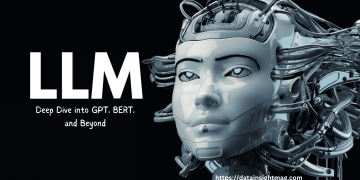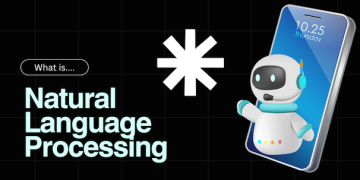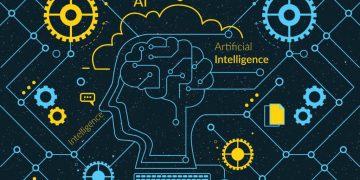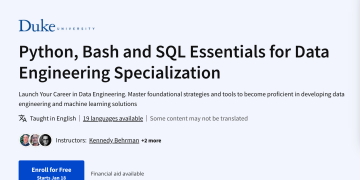Natural Language Processing is a computer technique used to interpret and act on human language, like English. It is an integral aspect of cognitive and artificial intelligence. The procedure involves conversion of speech to text, training of the machine for smart decisions or action. Natural language processing (NLP) operates on an unstructured data form and depends on several elements, including languages, accent, syntax, tone and sentiments. Some steps are used by NLP, such as lexical analysis, syntactical analysis, semantic analysis, speech integration, and pragmatic analysis.
Understanding Natural Language Processing
Artificial intelligence implies making computers as intelligent as human beings. The processing of natural languages is part of AI. The processing of natural languages allows computers to comprehend, act and communicate with people through their language. It can be used in many areas like passing commands to perform some action, converting speech to text and document it, telling directions in automobiles, etc.
But it’s not easy to build NLP (Natural Language Processing). Computers are designed to use organized data, track commands well-defined and employ standardized language. They are very systematic in terms of their processing. But Natural Language are not structured. There are numerous variables, such as a region, location, slang, accent, etc., that might impact a person’s language. Even the same word may change according on the circumstance. In order to create a computer intelligent enough for a person to comprehend and operate in his/her language, the flexibility of the language must be built. In a given situation it should be able to decode what an individual intends to communicate.
Computers can be taught natural language through the power of machine learning. Multiple text sets will be sent to computers and the sets processed using algorithms for text analysers to inform the computer how natural language works
Techniques used in Natural Language Processing
Natural language processing helps in extracting valuable information from a text and learn from it. Consider the below paragraph as an example.
The airline company RonAir offers a decent service. All of the employees are really cooperative, particularly IniOluwa, Daniel, Olusola and Dara. The only difficulty with the aircraft is that it was very often delayed. Flights are even canceled sometimes.
Below are some of the techniques used in NLP:
- Grammar Induction:It helps in writing correct grammar. Given in the above example word ‘gets’ is not used correctly, will get highlighted when used in the NLP engine.
- Sentiment Analysis:NLP is used to analyze the positive and negative nature of the sentence. For example, in the above paragraph, ‘airline provides decent service’, and ‘staff members are very co-operative’ are positive comments whereas ‘got delayed very often’ is a negative comment.
- Aspect Mining:NLP uses aspect mining to determine which aspect is positive and which aspect is negative. In the above example, the staff is a positive aspect whereas flight service is a negative aspect.
- Name Entity Recognition:It is used to recognize the names of important persons, organization, locality, dates, etc. For example, RonAir airlines, IniOluwa, Daniel, Olusola and Dara.
- Summarization:NLP can also be used to summarize text and provide a crux of the text. It gives ranks to sentences according to their similarity with other sentences. Thus, the sentence with the highest rank is included in the summary.
- Topic Recognition:NLP analyzes the text and finds the topic to which the text is mainly related. It will extract some keywords and categorize them under some topic. For example, in the above text, the two main topics are “Staff Member” and “Flights”.
Speech to Text Conversion: If the above paragraph had been a response to a feedback call, then it can be recorded and converted into text. After this, it can be further analyzed for service improvements.
Working of Natural Language Processing
NLP, although a part of AI, uses machine learning techniques to extract information and learning from that. The algorithm for machine learning works on the key elements of learning. NLP also continues to learn based on the given information. This is why NLP tends to correctly guess what the user wants to say even though mistakes and common language patterns are common. Underneath are the NLP steps:
- Lexical Analysis: Lexical analysis means dividing the whole text segment into sentences, words and analyze their meaning.
- Syntactical Analysis: This method involves the association of words with other words, their arrangement in the sentence, and their relative meaning.
- Semantic Analysis: In this analysis, the meaningfulness of the sentence is checked.
- Discourse Integration: This method analyses the relative meaning of sentences and their association with other sentences.
- Pragmatic Analysis: This method deals with the real-world meaning of the sentence.
Importance of Natural Language Processing
There is an ever-increasing number of data on the web. These are mostly unstructured text. It is a difficult task to acquire valuable information from these data. In this scenario, NLP may be employed.
NLP techniques can be used to convert speech to text, hence NLP can be used to document stuff for people unable to type. In order to examine sentiments, the NLP analysis can be employed to help firms achieve customer happiness. IT assists users unknown about technology to operate comfortably with it.
Uses of Natural Language Processing
Below are some of the usage of NLP:
- Voice recognition
- Text classification
- Sentiment Analyzer
- Speech to text
- Spell checking
- Grammar checking
- Document Summarization
- Question Answer
NLP examples
Technological advancements like Artificial Intelligence have gained prominent in recent years. Efforts were made to build a computer as intelligent as a human being. To some extent, this has been successful. This effort is part of the NLP. Some examples of NLP are provided below:
- Amazon Alexa (Machine Translation)
- Google Assistant (Voice Recognition)
- Grammarly (to check grammatical error)
- Chatbot (question/ answer)
- Search Autocomplete
- Spell check (spelling check)
- Customer Service chatbot
- Robots performing actions on command
- Automobiles assistant
Conclusion
In machine-human interaction, NLP plays a key role. More and more growth in this area can be seen in the future. It can make life easier and more intelligent every day






















